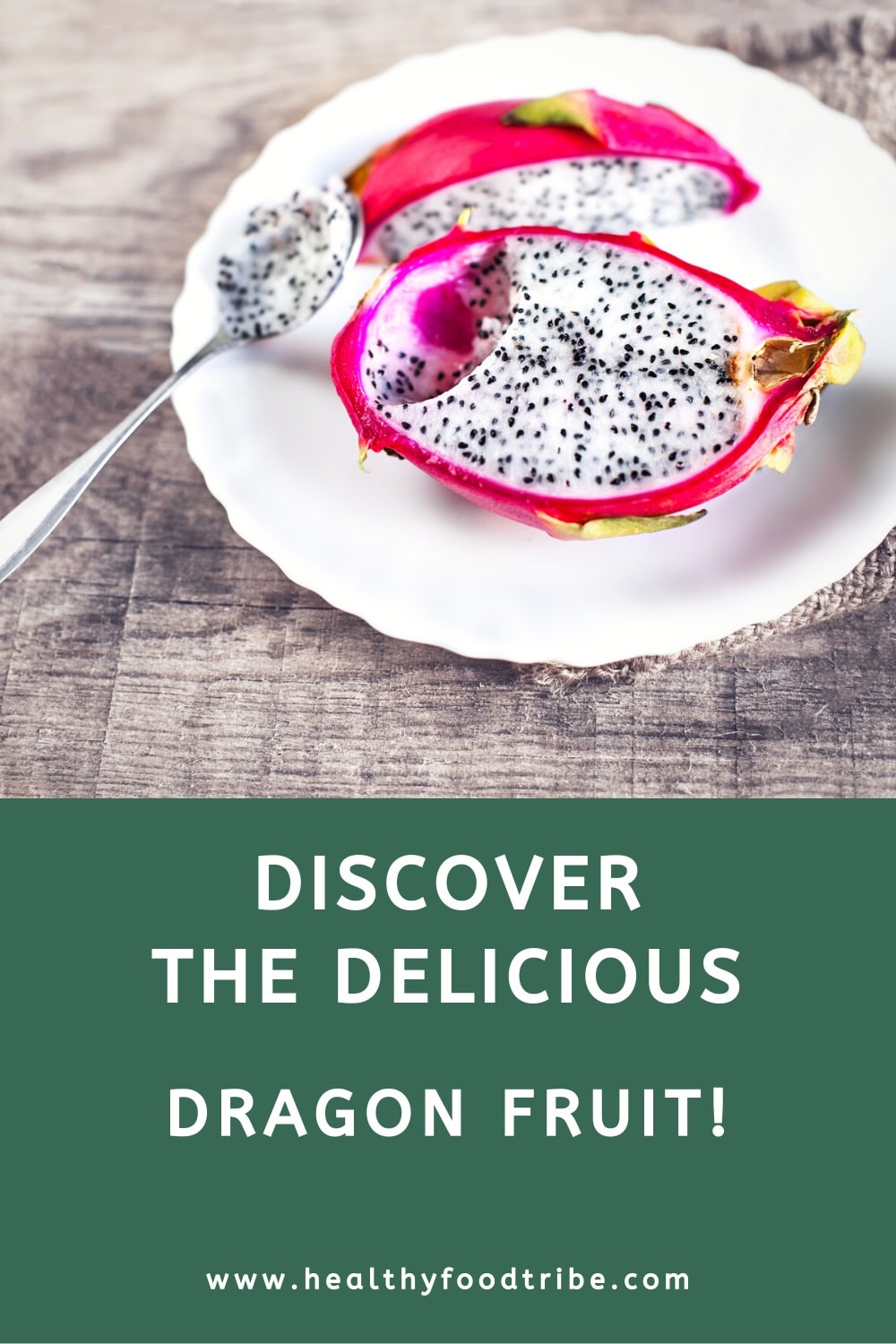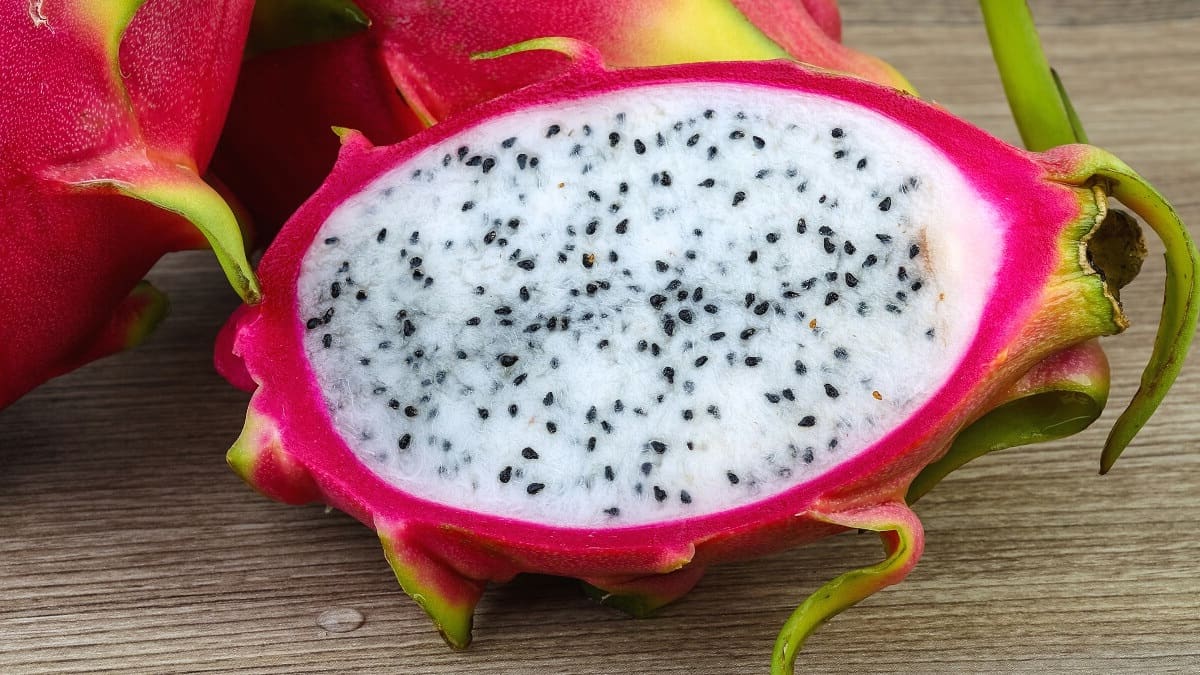Last updated: February 14, 2024
Discover the delicious dragon fruit with this comprehensive guide, delving into its origins and history, taste and texture, varieties, and more.
The mythical-sounding dragon fruit boasts not only an impressive name but also a colorful range of appearances and tantalizing flavors.
Originating from Central and South America, dragon fruit has captured the attention of foodies worldwide. In this article, I will explore this delicious fruit’s vibrant hues and shapes, diving into its nutritional treasure trove, and sharing some tasty recipe ideas to get your creative culinary juices flowing.
So, buckle up and join me on this tasty adventure, as we unravel the mysteries of the dragon fruit. By the end of this article, you’ll be a dragon fruit aficionado, just like me.
Quick navigation:
What Is Dragon Fruit?
Dragon fruit, also commonly known as pitaya or pitahaya, is a tropical fruit from a particular group of cactus plants (botanical name: Hylocereus).
The fact that dragon fruit comes from a cactus is not the only reason we’re dealing with a very unique fruit. It’s also the appearance, the colors, and the flavors that make dragon fruit such a fascinating treat.
Origins and History
All dragon fruit cactus species are native to Mexico and other parts of Central America, such as Guatemala, Nicaragua, and Costa Rica.
Dragon fruit’s vibrant appearance and tantalizing taste made it a highly sought-after treat in these countries for many centuries.
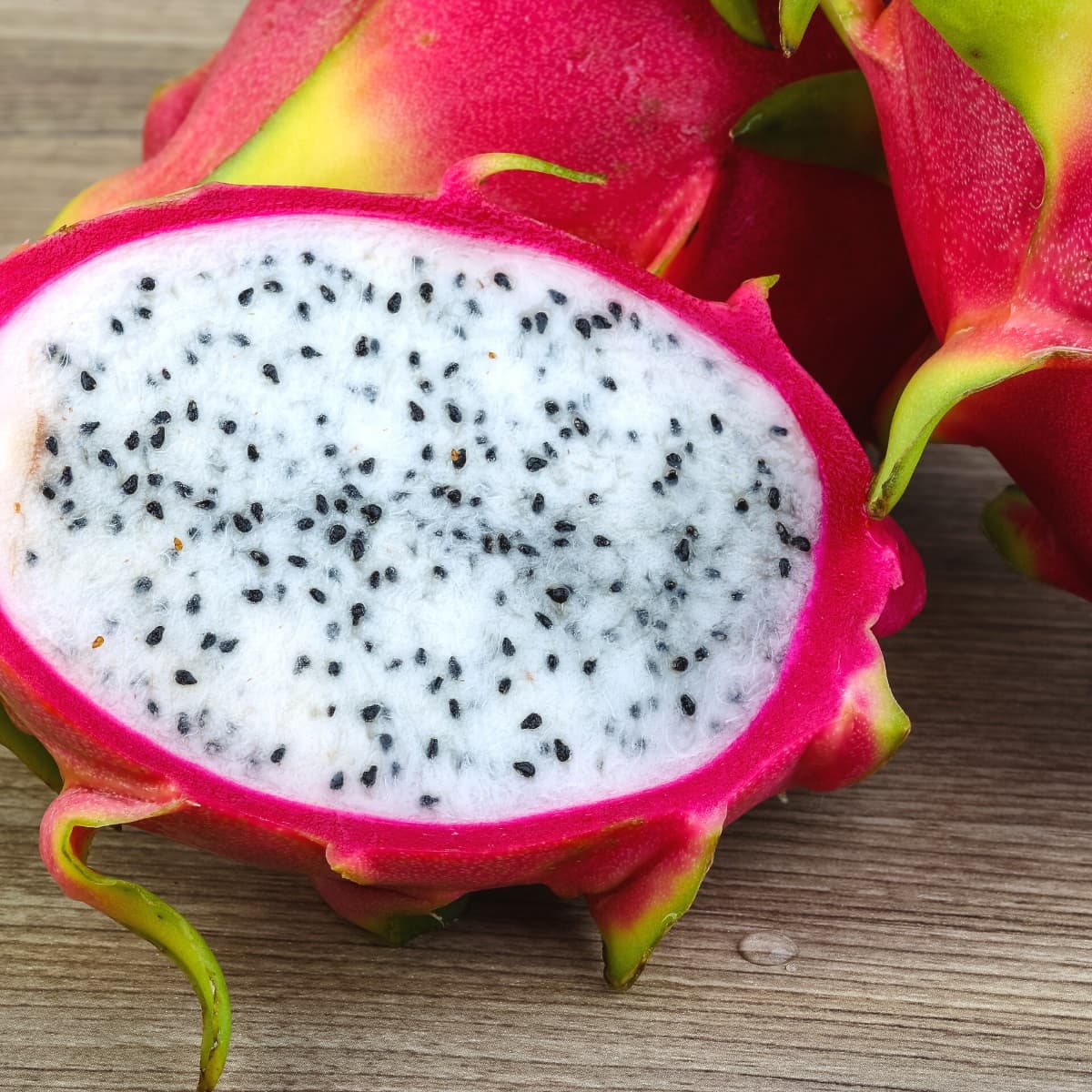
As people began to travel the globe, this extraordinary fruit was introduced to other parts of the world. Dragon fruit has made its way to Asia, where it has quickly become a beloved staple in countries like Thailand, Cambodia, the Philippines, Vietnam, and Taiwan.
Vietnam and Thailand are two of the largest producers of dragon fruit globally, supplying their delicious bounty to eager taste buds worldwide.
Today, dragon fruit is cultivated in various tropical and subtropical regions, including the United States (it’s a very popular fruit in Hawaii), Australia, and even Israel.
With advancements in farming techniques and increased global demand, this once-obscure fruit has risen to prominence, gracing the shelves of supermarkets and the menus of trendy eateries everywhere.
Dragon Fruit Varieties
There are three different dragon fruit varieties:
- Red skin with white flesh (Hylocereus undatus)
- Dark red skin with red flesh (Hylocereus costaricensis)
- Yellow skin with white flesh (Selenicereus megalanthus)
The most common dragon fruit type is Hylocereus undatus, which has red skin and white flesh.
This eye-catching gem features a mildly sweet taste and countless tiny black seeds, much like a kiwi fruit. This variety is the easiest to find in grocery stores.
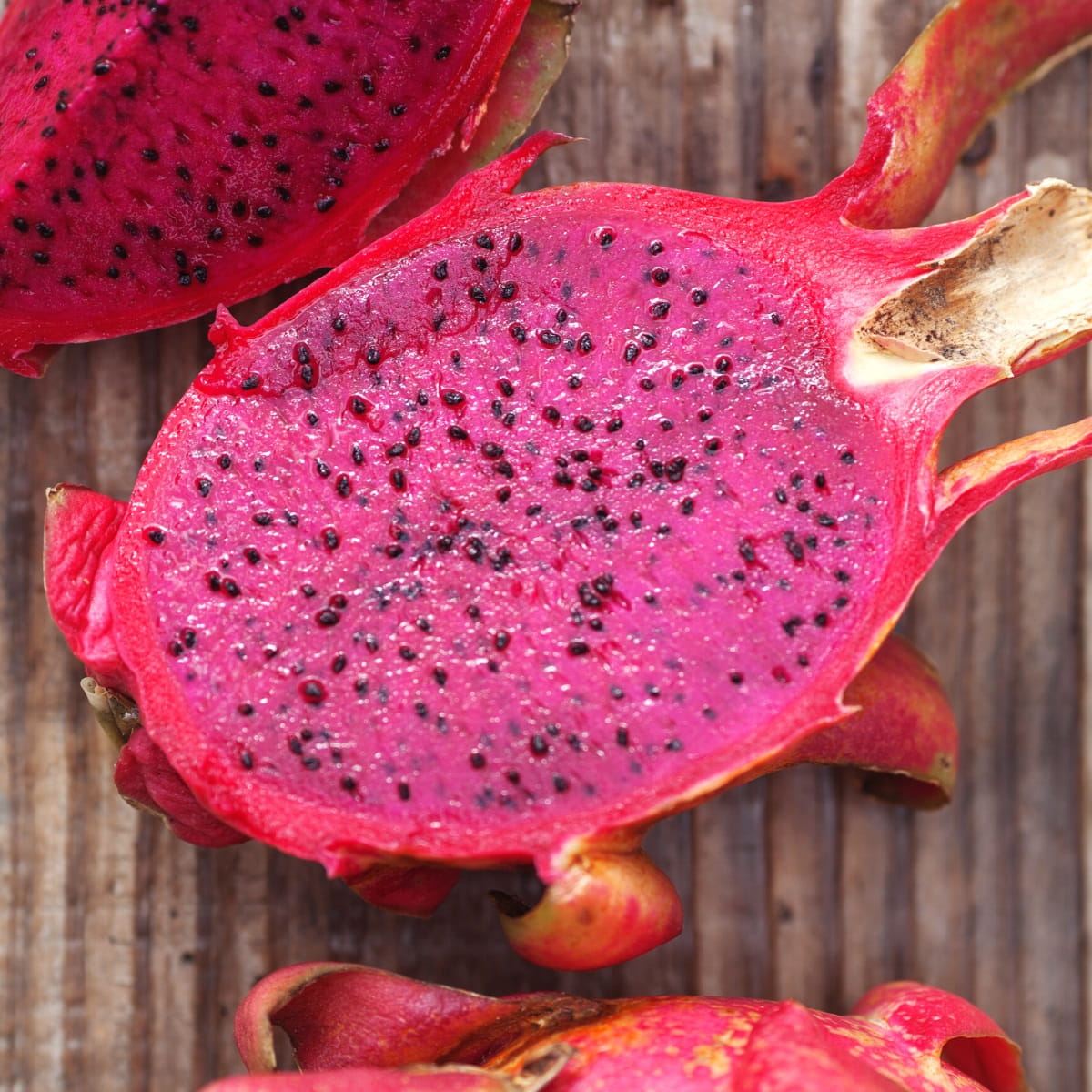
Another variety is the Hylocereus costaricensis, a dragon fruit with darker red skin and pink/red flesh.
It’s a visual stunner with a richer and slightly sweeter taste than its white-fleshed relative. It’s perfect for adding a pop of color to your dishes.
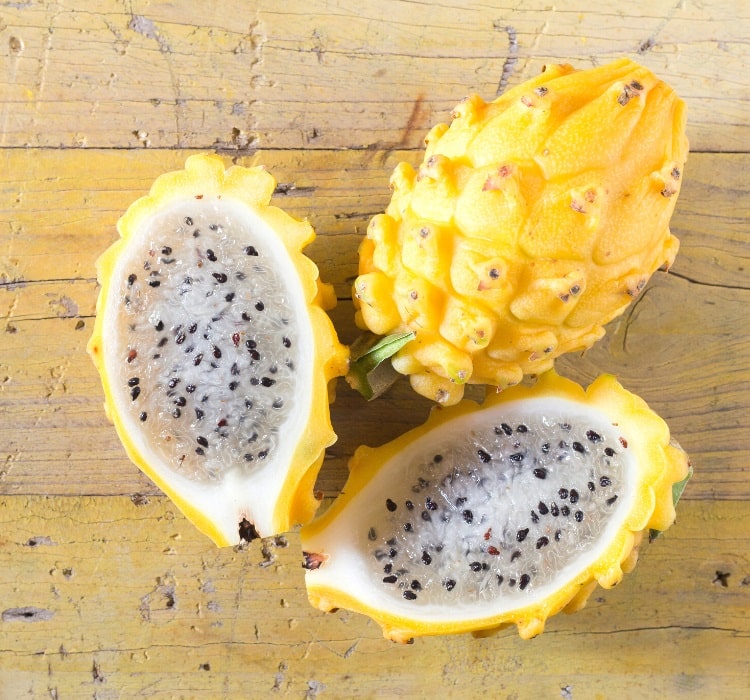
A third dragon fruit variety is the Selenicereus megalanthus. This dragon fruit has golden-yellow skin and white flesh and is typically a bit harder to find.
But it’s worth seeking out, as it offers a more intense sweetness and a pleasant texture.
Where to Find Dragon Fruit?
Dragon fruit is still quite a unique and exotic fruit that you won’t easily find in your average grocery store.
However, as mentioned, dragon fruit has popped up in grocery stores worldwide more often. And if you do come across a dragon fruit, it is most likely the one with red skin and white flesh.
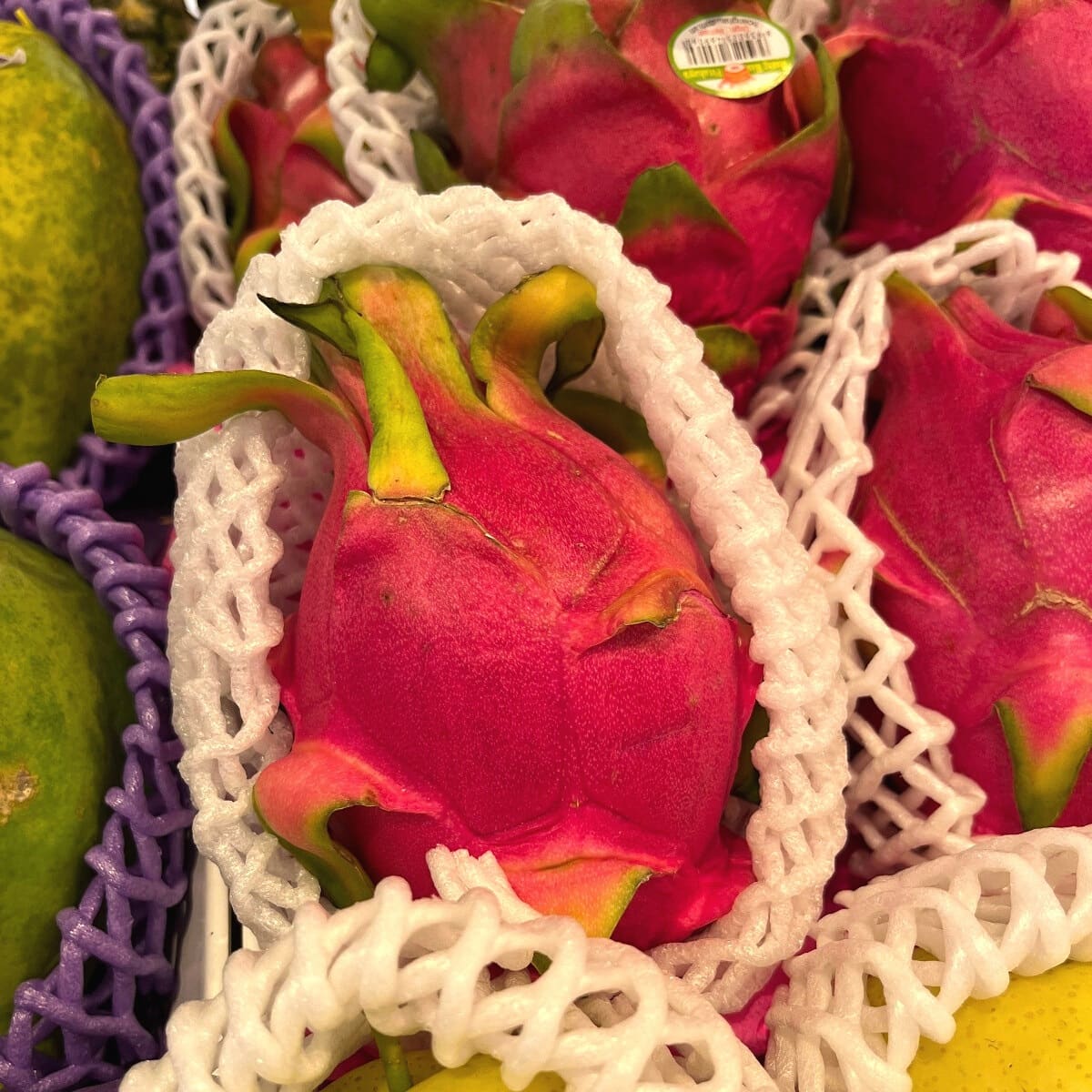
To increase your chances of finding one, maybe try Asian grocery stores, where you can also find other tropical fruits, such as snake fruit, durian, and cherimoya fruit.
You can also try and find this delicious fruit at large markets where you can often get a lot more variety in fruits and greens. I make a habit of visiting one of these markets at least once a month to find new, exciting fruits and vegetables to try out.
Consuming Dragon Fruit
Despite its unusual appearance, cutting and eating dragon fruit is much easier than it looks.
You can prepare dragon fruit in three ways:
- Peeling it
- Scooping it
- Slicing it
Peeling involves cutting the stem and blossom ends off the fruit, making a slit in the peel from one cut end to the other, and then peeling back the rind and carefully removing it from the flesh.
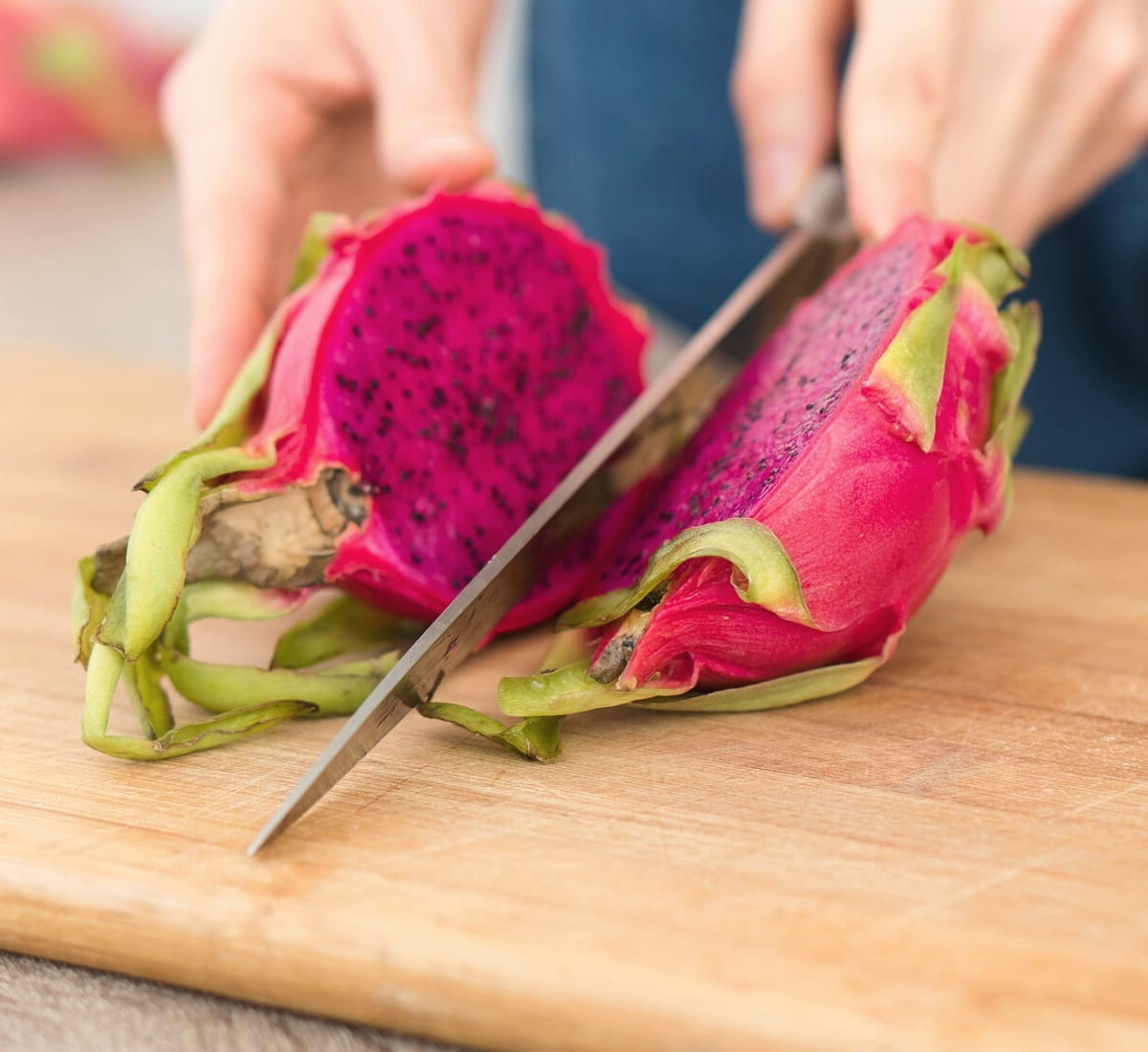
Scooping involves slicing the fruit in half lengthwise, and then scooping out the flesh inside using a spoon.
Slicing involves slicing the fruit in half lengthwise, slicing off the ends, and then slicing the remaining portion widthwise into equal sections.
For a more comprehensive guide, including practical storage tips and recipe ideas, read my article explaining how to cut and eat dragon fruit.
Nutritional Profile and Benefits
The dragon fruit is not only a feast for the eyes but also a great source of a variety of nutrients. Surprisingly, dragon fruit is surprisingly low in calories and high in fiber.
Below is an extract of the nutritional profile of 100 grams worth of dragon fruit, with some interesting numbers.
| Dragon Fruit Nutritional Profile (raw – 100 g) | |
|---|---|
| Energy | 264 kcal |
| Carbohydrates | 15.2 g |
| Sugar | 9.75 g |
| Protein | 0.36 g |
| Dietary fiber | 3.1 g |
| Minerals | |
| Iron | 0.18 mg |
| Magnesium | 7 mg |
| Calcium | 9 mg |
| Phosphorus | 12 mg |
| Potassium | 116 mg |
| Vitamins | |
| Vitamin A | 1 µg |
| Vitamin C | 4.3 mg |
| Vitamin E | 0.12 mg |
| Source: FoodData Central | |
Vitamins and Minerals
As you can see from the table above, dragon fruit is packed with an array of essential vitamins and minerals.
The vitamins that stand out are vitamins A, C, and E; the minerals that dragon fruit is a good source of are iron, magnesium, calcium, and potassium.
Fiber Content and Antioxidants
The vibrant colors of dragon fruit, particularly the red-fleshed variety, are a telltale sign of its high antioxidant content, including betalains and flavonoids.
Dragon fruit is also an excellent source of dietary fiber, which supports healthy digestion. A single serving can provide as much as 7-10% of your daily fiber needs.
Low in Calories and Sugar
Besides the abundance of vitamins and minerals, the low-calorie and low-sugar content of dragon fruit makes it a delicious and guilt-free treat compared to many other fruits.
Growing Dragon Fruit
Are you thinking of growing your very own dragon fruit? It’s actually much easier than you may think!
When growing dragon fruit in your garden, you have two options:
- Grow from dragon fruit seeds
- Grow from a stem cutting
Growing from dragon fruit seeds is the easiest option, but it can take a very long time. So, if you need quicker results, it’s better to find quality stem cuttings. Take a cutting from a healthy plant, and let it dry for a few days before planting.
Plant the cutting in a large pot with drainage using a high-quality potting mix. It can take a few months before the cuttings start to develop strong roots, so please be patient with that process. Dragon fruit plants love sunlight and require at least 6 hours of direct sunlight daily.
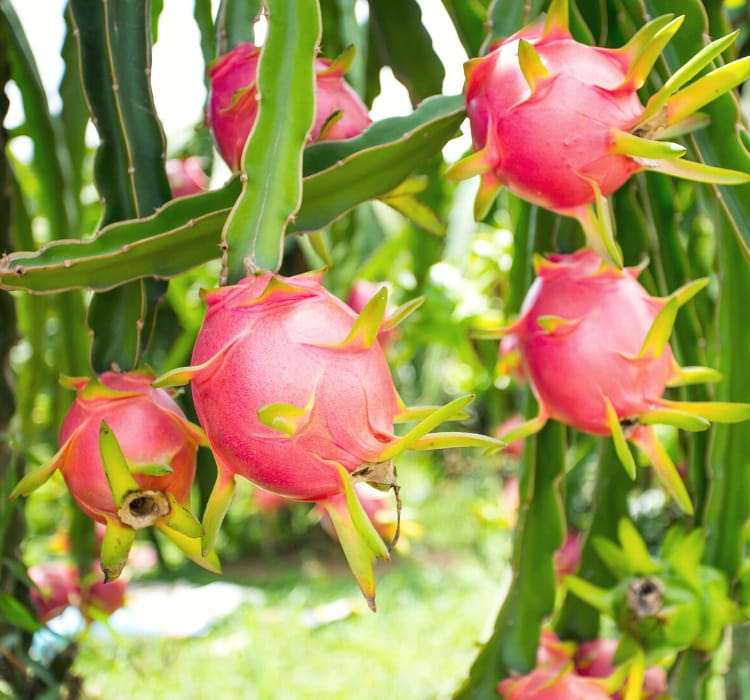
As the cactus slowly starts growing, gradually prune the stems, allowing them to branch out further. As the plant grows higher, it’s recommended to support it using a garden twine, or something similar.
Even though the cactus is a desert plant, you still need to water it regularly, ideally about once a week. Once the plant starts to bloom, it can take another month or so before the dragon fruit starts to develop.
Dragon fruits are ready to harvest when their color is vibrant, and the fruit yields slightly under gentle pressure. Use a sharp knife or pruning shears to cut the fruit from the stem.
Dragon Fruit Recipe Ideas
While there are many dragon fruit recipes, I always prefer to eat fresh dragon fruit. The white flesh variety has such a delicious flavor that I love eating it as a snack.
Mind you, it’s a flavor that blends well with many recipes. And the intense flavor of pink-fleshed types has the potential to elevate the right dishes.

Another thing I love doing is adding sliced dragon fruit to fruit salads. I also enjoy adding dragon fruit pieces to smoothies or adding them to yogurt and granola dishes as a topper. Like pears or apples, dragon fruit can also be added to greens salads for a sweet twist.
On the savory side, dragon fruit can be added to salsas and marinades. And for dessert, try whipping up some homemade dragon fruit ice cream.
Dragon Fruit Blueberry Smoothie
As you may already know, I’m a passionate smoothie enthusiast, so I enjoy blending dragon fruit with some of my other favorite ingredients.
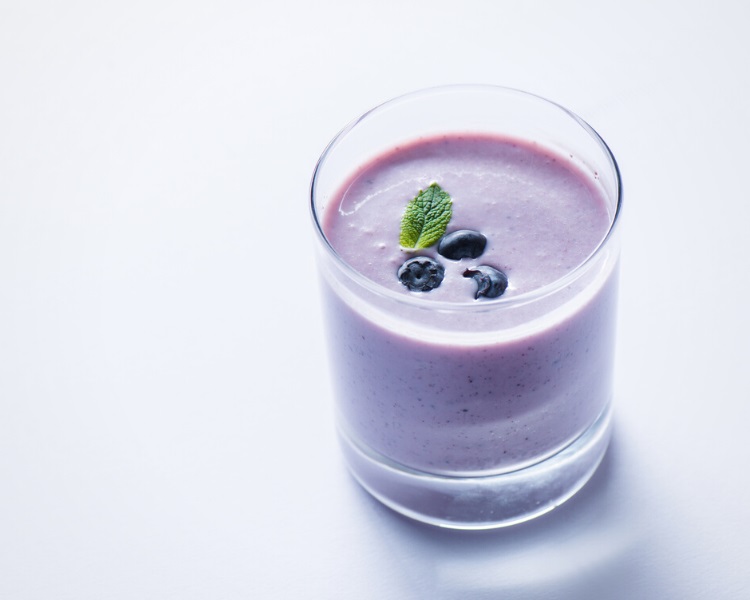
This particular dragon fruit smoothie recipe with blueberry is my favorite.
It has all the right flavors and works best in the morning or otherwise on a warm summer’s day.
Ingredients:
- 1 whole dragon fruit (fresh)
- 1 small cup blueberries
- 1 banana (fresh or frozen)
- 1 tsp grated ginger
- 1 cup unsweetened almond milk
- 1 small cup ice cubes
- 1 mint leaf (garnish, optional)
Blend it all together, and you end up with a super refreshing drink. What’s great about this recipe is that the dragon fruit flavors don’t disappear.
I do love blending fruits with vegetables, but for this particular smoothie, because it has dragon fruit, I decided to leave the vegetables out.
Final Thoughts
Are you a bit tired of eating the same fruits every day? Then I hope this article about dragon fruit has encouraged you to try a much more exciting alternative to the fruits you usually eat.
From its captivating appearance to its rich and refreshing taste, the dragon fruit truly stands out as a superstar among fruits. Its versatile nature lends itself to a myriad of culinary creations, while its intriguing history and origins add a touch of mystique to its allure.
Interested to learn more about other exotic treats? Read about my experience with the kiwano melon, a truly unique fruit that you might like just as much as dragon fruit.
